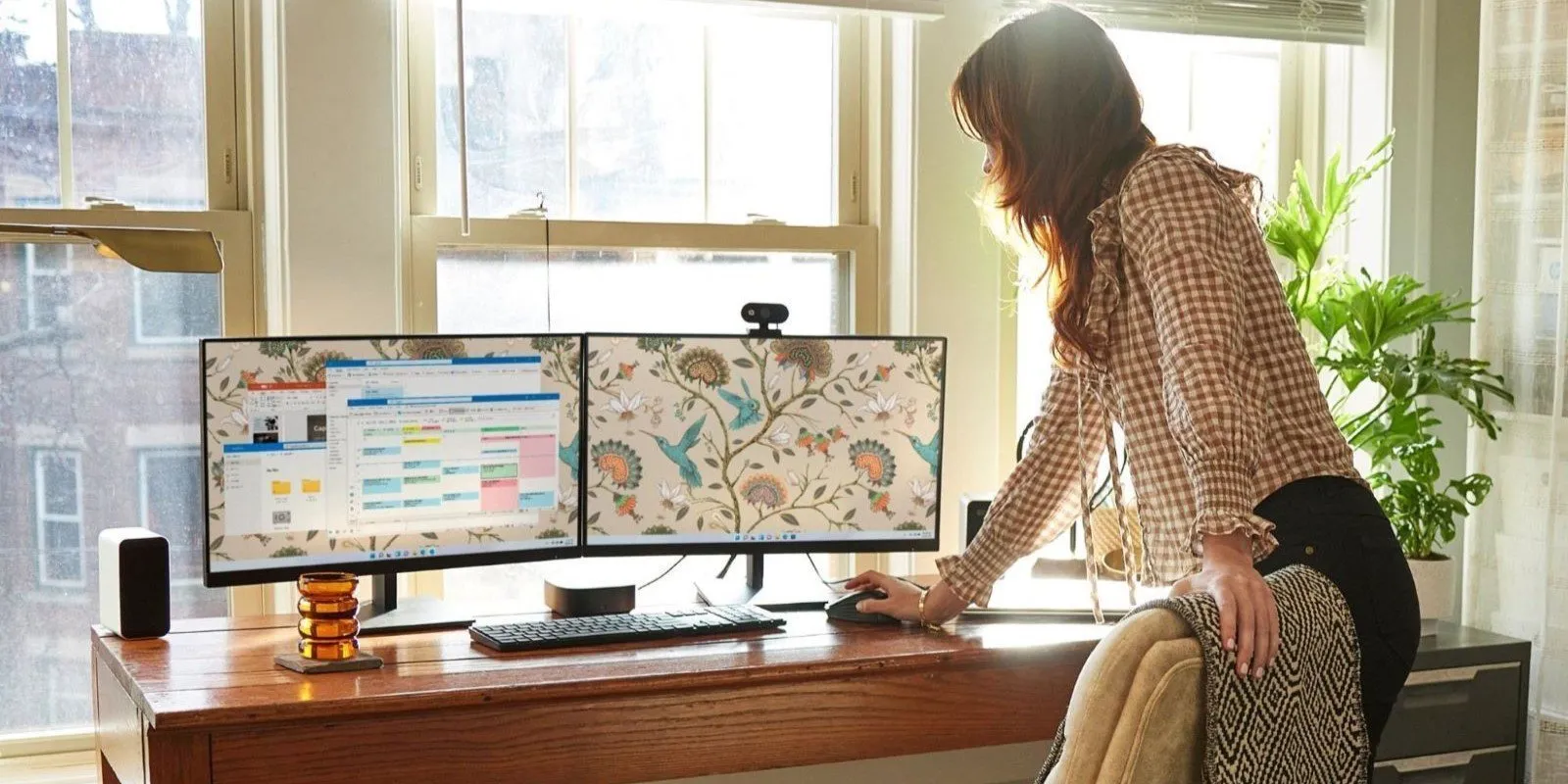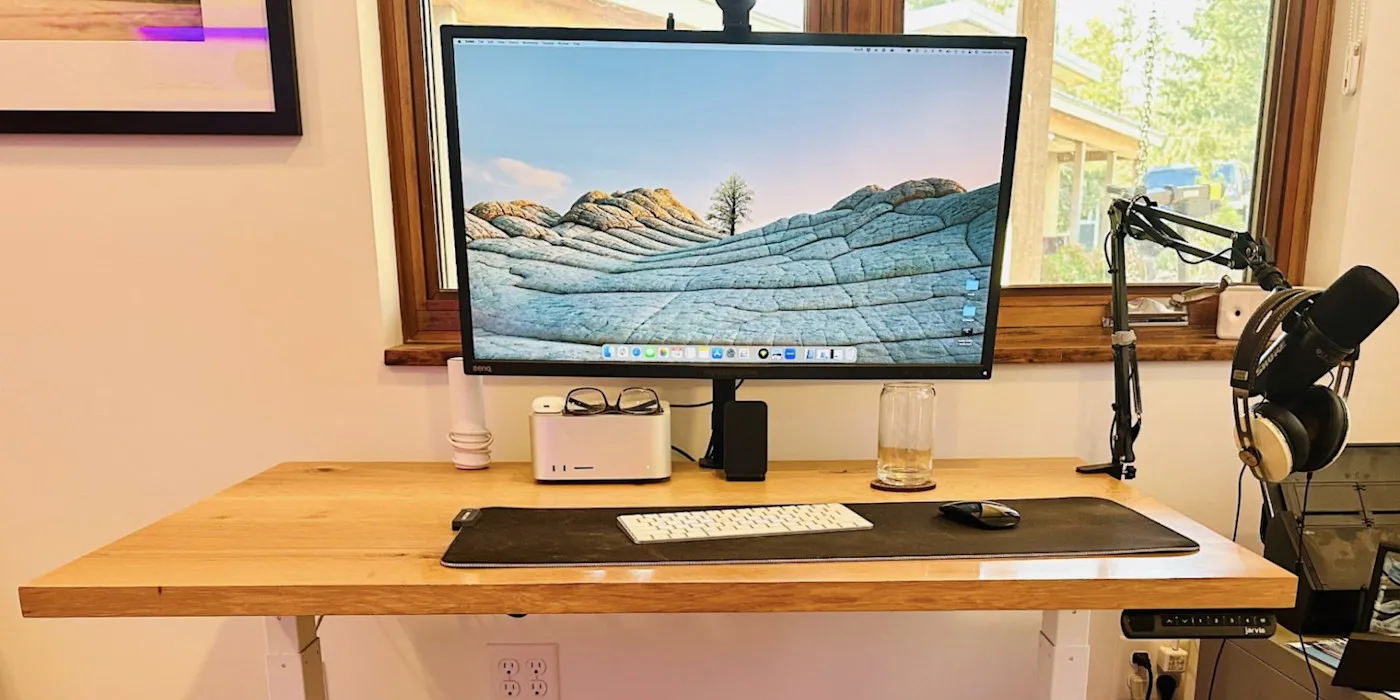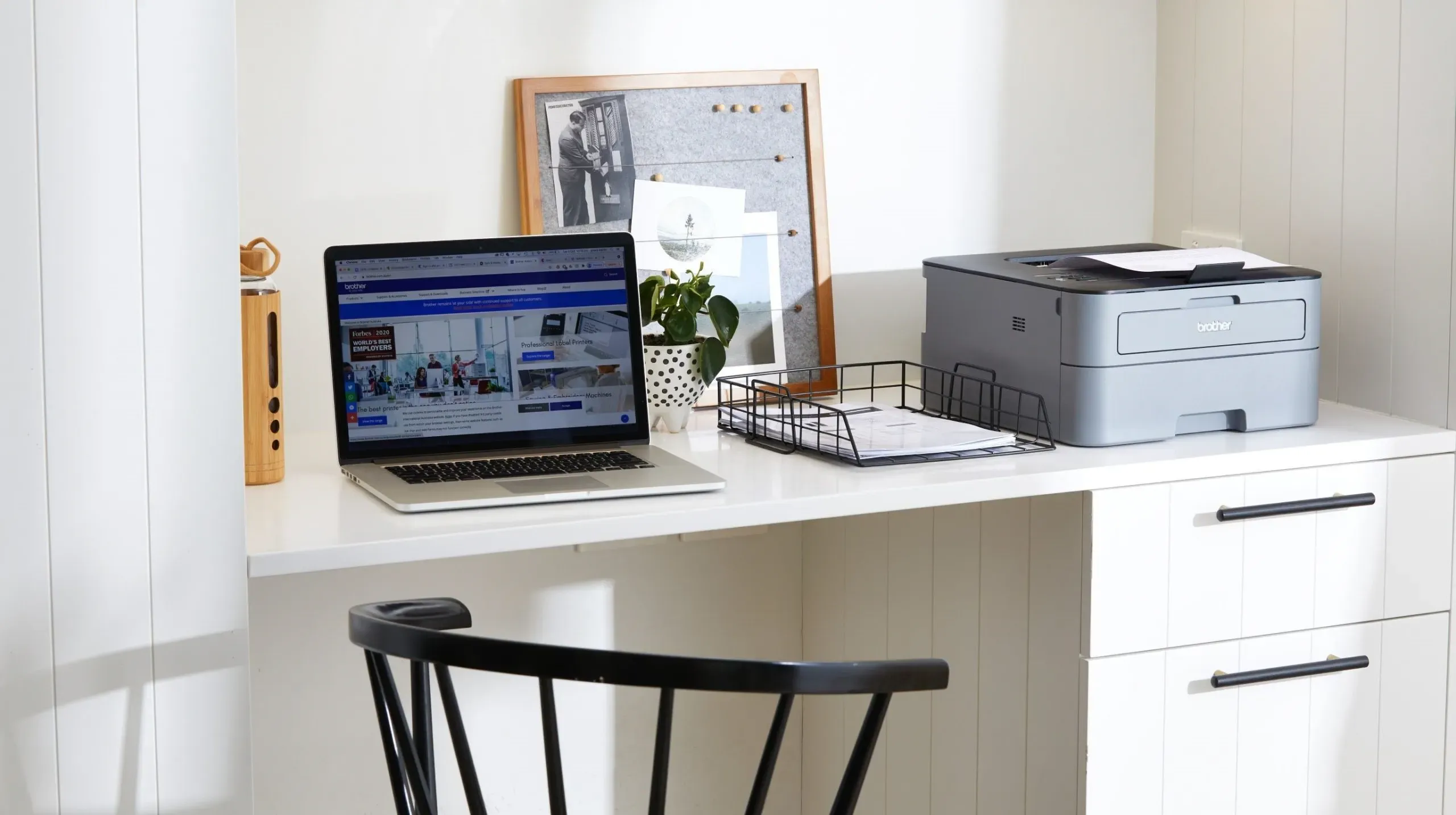Setting up a functional home office requires more than just a table and a chair. If you want to maintain productivity while working from home, then your space must offer comfort, organisation and the right tools to support your daily tasks. It is no longer enough to clear a corner of the living room and place your laptop on any available surface.
With remote work becoming more common, creating an environment that mirrors the functionality of a traditional office while offering the ease of home is necessary. The goal is to achieve a balance that supports focus without losing the sense of personal comfort.

Natural light can boost your energy and help reduce screen fatigue (Photo: Alamy)
Many people who work from home underestimate the value of intentional design. A well-thought-out space contributes to better concentration, helps reduce fatigue and boosts morale during long work hours.
Whether you are working full-time remotely or just need a dedicated corner for occasional tasks, the design and structure of your home office can determine how much you achieve in a day. In this guide, we will take you through essential steps and elements you need to build a workspace that supports you daily.
Choosing the Right Space in Your Home
Before you buy any furniture or equipment, identify a part of your house that offers privacy and minimal distractions. This could be a spare room, a quiet corner in the bedroom or even an area under the staircase, if space is tight. The most important thing is to choose somewhere you can associate with work and nothing else. Working in the same space where you sleep or relax makes it harder to mentally switch into work mode.
Natural lighting is also a major factor when selecting your space. Choose a location that has a window, if possible. This helps reduce eye strain and lifts your mood, especially during long meetings or intense tasks. If your space has poor lighting, consider adding warm-toned LED lights or a daylight lamp to brighten the area without causing discomfort to your eyes.
Desk and Chair: Comfort Before Style
A stylish desk might look good on video calls but functionality should always come first. Choose a desk that allows you to spread out your work materials comfortably. Whether you need space for dual monitors, a drawing tablet or stacks of paperwork, ensure your desk can handle your workload without cluttering too quickly. Some people prefer adjustable desks that allow them to alternate between sitting and standing, which helps reduce physical strain.
Equally important is the chair you select. Many people make the mistake of using dining chairs or couches while working, which often leads to back pain. Instead, invest in an ergonomic chair that supports your lower back and encourages proper posture. Look for one with adjustable height, lumbar support and a headrest if you spend long hours seated. It is worth spending a bit more to avoid health issues that come with poor posture.
Keeping Your Work Tools Organised
The presence of clutter affects your ability to focus and can create mental fatigue without you realising it. Introduce storage solutions that match your needs. This could be drawers under the desk, wall-mounted shelves or filing cabinets. The goal is to keep your workspace clear of items you do not need immediately but within reach when necessary.
Labelled folders, cable organisers and drawer dividers help keep everything in its place. By giving each tool or document a home, you avoid wasting time looking for things during work hours. A tidy workspace is often a productive one, especially when you know where everything is kept.
Technology Essentials for Productivity
Depending on your profession, you may need a variety of tools and devices. A reliable computer or laptop is non-negotiable, but there are other gadgets that can improve your work experience. Invest in a high-quality external monitor if you work with multiple applications at once. This makes it easier to manage your workflow without switching between windows.
A comfortable keyboard and wireless mouse can also reduce hand strain. If you are constantly on video calls, consider a good webcam and noise-cancelling headset to maintain clear communication. Strong internet connection is also important. If your Wi-Fi is unstable, consider using an Ethernet cable or a mesh system to ensure smooth connectivity throughout the day.
Lighting That Supports Focus and Reduces Fatigue
Lighting plays a larger role than many people realise. Harsh overhead lights can cause headaches or create glare on screens, while poor lighting strains your eyes. A desk lamp with adjustable brightness and colour temperature is ideal. Choose warm light for general tasks and white light for reading or design work that needs clarity.
Try to position your desk close to a window without facing it directly, as sunlight might reflect on your screen. If you work late hours, proper lighting becomes even more important. Make sure your entire work area is evenly lit to avoid shadows or dim corners that can make your eyes work harder.
Personal Touches That Improve Your Mood
Adding elements that reflect your personality can help you feel more relaxed in your space. This may include a potted plant, a piece of art, or even a motivational quote on the wall. These items should be placed carefully so they do not create distractions. Green plants especially have been shown to reduce stress and freshen the air in your workspace.
Your home office should still feel like part of your home, but with a clear difference from other rooms. The design must help you feel at ease without pulling you away from your tasks. A few personal touches help make the space yours, giving you a sense of ownership and comfort.
Sound Management and Controlling Distractions
One major challenge with working from home is dealing with external noise. If your home is in a busy area or you have family members around, soundproofing becomes important. Use noise-cancelling headphones if you are often on calls or need to block out background sounds. Adding a thick rug, curtains or acoustic panels can also help reduce sound bouncing off the walls.
If sound is not a problem, then focus on visual distractions. Avoid facing the television or sitting too close to the kitchen or play areas. Let your housemates know your work hours so they can minimise interruptions. You can also use a “do not disturb” sign during important calls or focused tasks.
Maintaining a Clear Division Between Work and Personal Life
One danger of remote work is allowing your job to take over your personal life. To avoid this, always define your work hours and stick to them. Even though your office is within your home, treat it as a separate zone. When you finish your tasks for the day, leave that space and avoid returning until the next day.

A well-designed home office keeps you focused and motivated (Photo: Getty Images)
This mental separation is crucial to prevent burnout. You can close your laptop, turn off your work phone or step out for a short walk to mark the end of your workday. Let your home office support your job without taking away from your rest time or family life.
Routine Maintenance and Adjustments
Your needs may change over time, especially if your role changes or you take on new responsibilities. From time to time, evaluate your setup to make sure it still works for you. You might need to rearrange furniture, upgrade your internet or invest in better tools.
Cleaning is also a regular task. Dust, crumbs or scattered papers can quickly affect how you feel in your workspace. A weekly tidy-up can restore order and make you feel more prepared for the week ahead. Keep wipes, cloths and a bin close by to make daily upkeep easier.
Creating a Space That Supports Long-Term Growth
Finally, consider your future plans. If remote work is permanent for you, think about upgrades that will help over time. You may want to invest in a better chair, a larger monitor or improved storage solutions. Avoid quick fixes that will need replacing in a few months.
A strong home office setup encourages consistency. It helps you remain focused, delivers comfort and saves time during tasks. When every item has a purpose and your space feels balanced, working from home becomes smoother and more rewarding. Choose wisely, adjust when necessary and build an office that can grow with your career.
























